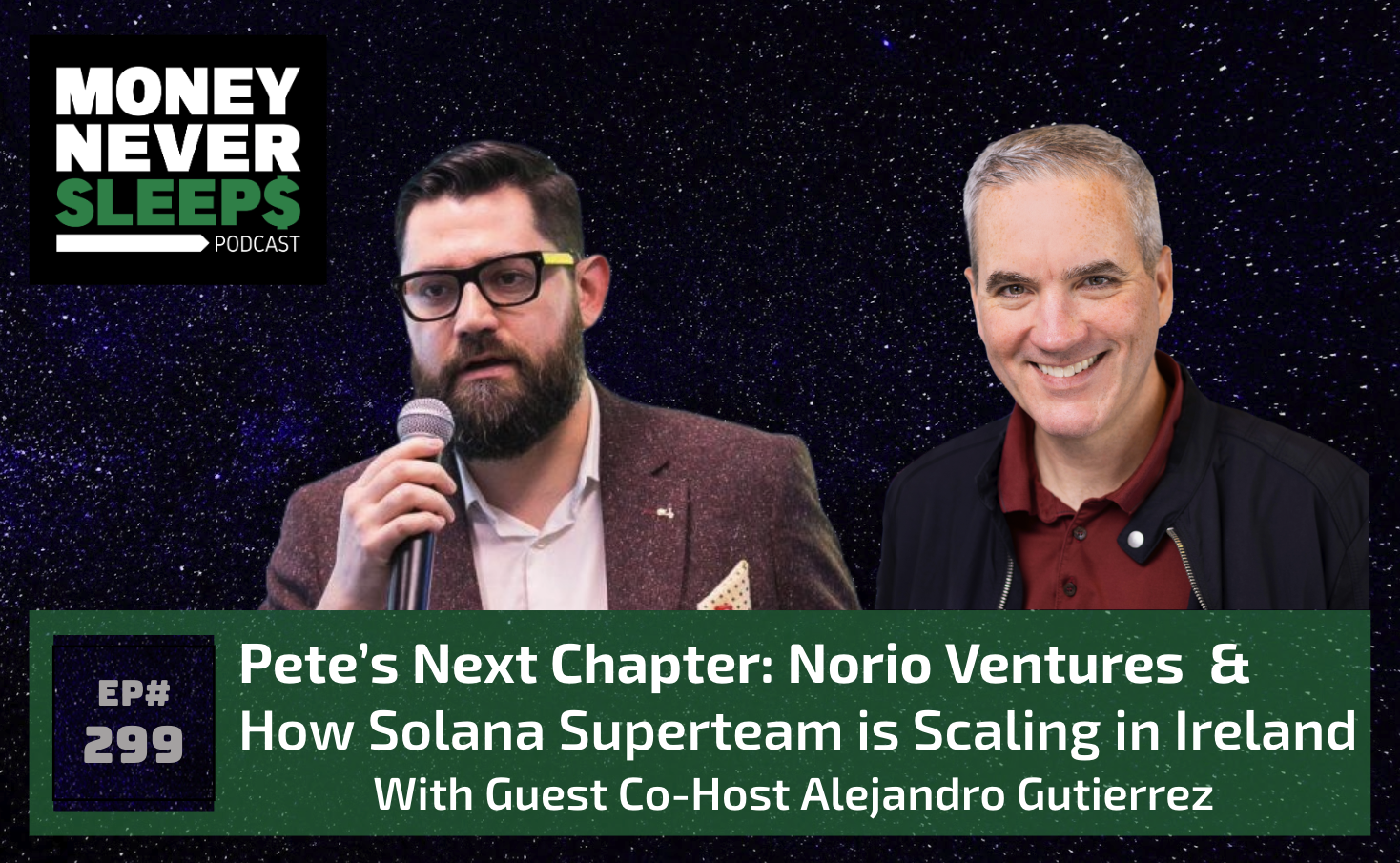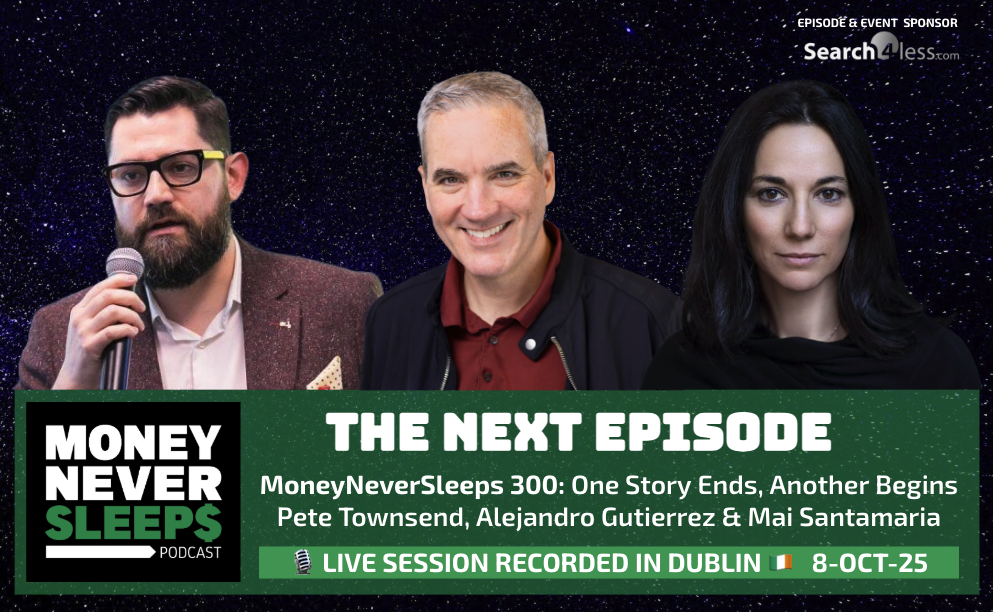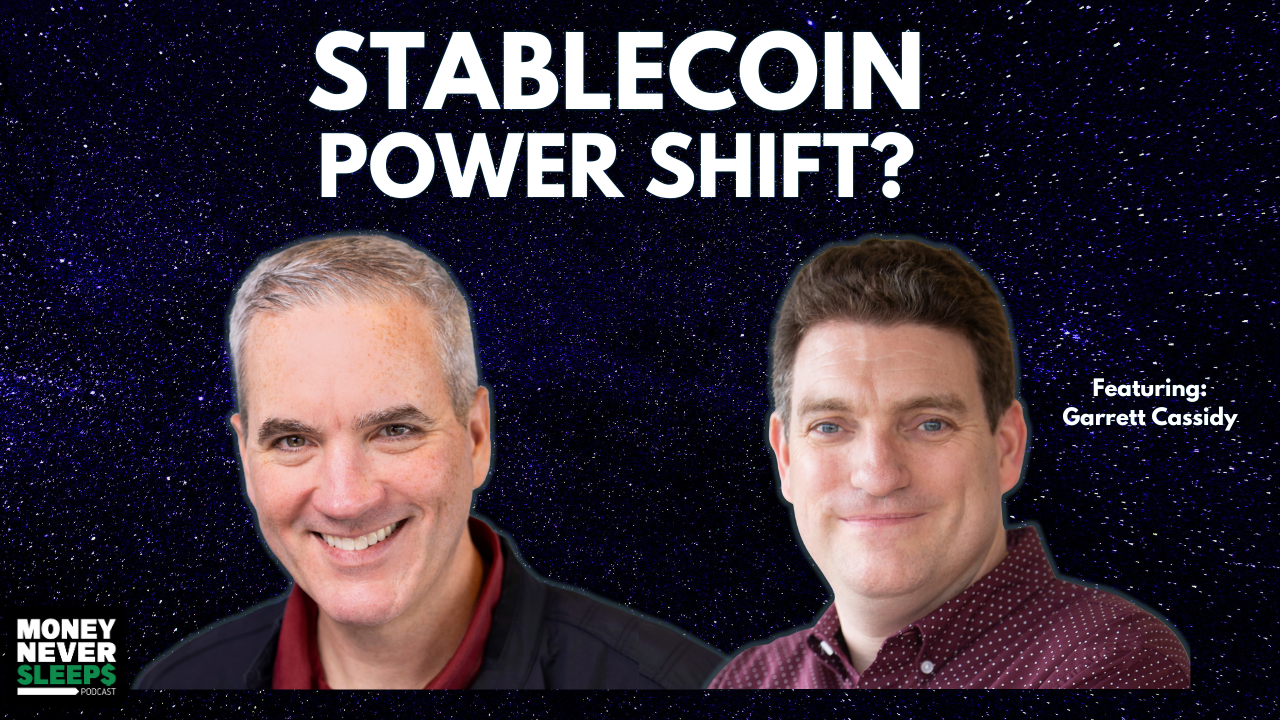169: Tim Bos | ShareRing, Building in Web3 and the Sharing Economy


Joining the show this week is Tim Bos, founder and CEO of ShareRing, a blockchain-based company that's focused on changing the landscape of the fragmented sharing economy. In this chat, Tim and Pete Townsend talk through Tim’s crystal ball-like experiences in deep tech in the ’90s, how being a third-time founder has shaped his view of the blockchain space, adapting all of this incredible technology at our fingertips into real-world scenarios, and what makes a great Web3 project.
This episode was originally recorded as part of the Techstars Web3 Convo Series of fireside chats powered by the Launchpool Web3 Techstars Accelerator program in Ireland.
This episode of MoneyNeverSleeps is sponsored by Philip Lee, one of Ireland’s fastest-growing corporate law firms and expert advisors at the heart of the Dublin and London start-up, fintech and crypto communities.
HIGHLIGHTS:
Tim Bos on the predictive nature of his earliest experiences in distributed computing in the ‘90’s:
“I've always approached things from the perspective of a problem that needs to be solved. We were developing an alien-themed video game and I needed to work out a way to render the 30-second intro sequences as quickly as possible with 3D animation. Back then in the mid-nineties, you couldn’t do the real-time rendering that you can now, as the servers just weren’t good enough.
“I looked into a whole load of technology, and I was always more of an infrastructure person, but I worked out that distributed computing was how we’d do it. We set up a farm that had 30 or 40 computers all networked together that would share the code in doing very difficult computations to render these 3D animations.
“They would do one scene at a time, and it was spread across all these computers. We managed to get it done, and through that process, I thought that this is something that we shouldn't have to do in-house. Imagine if we could distribute this out amongst computers around the world and pay for computer time to do all of that.
“So, when a friend of mine taught me about Bitcoin around 2010, it fascinated me. The idea of these distributed computers around the world, solving these difficult mathematical problems to be part of this consensus of a new digital currency just fascinated me.
“I started mining bitcoin [in 2010] just purely out of my interest in the technology, and that’s what initially got me into cryptocurrency. I mined it for a while and had quite a lot of it stored on a hard disk somewhere, but I have no idea where it is now – I probably deleted it or it’s in a tip (dump) somewhere.
“That's really the early beginnings of my fascination with distributed computing.”
Tim Bos on how ShareRing has evolved since launching in 2018:
“We established ShareRing in 2018 off the back of a concept that I created back in 2013 for a platform for the sharing economy, which is an industry built on trust. We use the platform that we've developed and the ecosystem that we're developing to help create that world built on trust.
“What we're doing now is taking a lot of aspects that we started building in 2018, but really expanding that to be able to provide frictionless access to goods and services, anytime and in any way.
“This involves things like when you book your hotel, you don't have to enter all your details again, you can check into the hotel without having to queue up and hand your passport over. You can open a bank account without having to go to the bank and fill out forms. You can access an event with a simple scan of a QR code, but by scanning a QR code, you're proving who you are, that you've got a ticket and that you're vaccinated.”
“Since 2018, we spent a lot of time looking at identity and our ShareRing Vault, which is the vault with verifiable documents with verifiable credentials all stored on your phone. It’s a self-sovereign system using blockchain technology to verify the information hasn't changed and to verify its validity.
“We’re now working on applying the technology to workplace access, accommodation, activities, flights, insurance, electronic visas, shopping and e-commerce, digital lifestyle services, access to websites and metaverses, document signing and NFT (non-fungible token) usage.
“All of that fits under the umbrella of being able to build trust, but also provide frictionless access to goods and services.”
Tim Bos on how to approach building products with blockchain technology at the core:
“Go in with your eyes open and understand that getting resources to do this sort of stuff is hard. Understand that you need to invest money into training the right people; that does take time, hiring takes time, expanding the team takes time.
“Don't go too early and try to start selling a product that isn't ready for the real world as well. There's a lot of ‘vapor-ware’ that gets sold out there. We’ve failed on a few fronts in that sense where we've started selling ideas before they were ready and had to reprioritize away from those ideas.
“One of the other challenges is if you don't have a really good network of people that are going to support you and help pilot your products and become customers, you need a plan on how you’re going to spend some money and do some very good marketing to start getting some real users on the platform.”
Tim Bos on building your user base:
“For me, a huge amount of it is your network, people who know and trust you. As you go through different businesses or different jobs, don’t ever burn bridges. Those people that you worked with before might be some of the people that you're going to call up because they're a prospective customer, someone that you want to partner with, or somebody that might want to work with you.
“You might want to call them up one day and basically say, ‘Hey, listen, we're building this, do you mind helping us out with a partnership or pilots?’. That really, really helps.
“And the other thing is when you're hiring people - salespeople in particular - don't just look for someone with the right skills, look for people with a good book of contacts. A little bit of gray hair always helps as well, because you know that they've got some good contacts in the industry.”
Tim Bos on leveraging tools like Discord to build your community and user base in Web3:
“A huge thing on Discord is to make sure that you actually have some discord in your Discord.
“Make sure you have people that are genuinely getting involved, genuinely chatting, giving updates and all of that. We've got an amazing community that gives us a lot of great feedback and the community managers that manage this are absolutely amazing.
“They're super supportive of what we do. We listen to a lot of the feedback when they're unhappy with what we do, and we take a lot of that in to make changes internally to make sure that we're responding and being transparent to them as well.”
Tim Bos on applying the technology at our fingertips with Web3 to real-world scenarios:
“Some [Web3 startups] just say, ‘I want to build this really cool technology'. And then when they're built, they're hitting a bit of a wall because there's no real-world scenario where it would be used.
“I remember in 2018, a lot of the [venture] funds were looking at protocols because they thought that if we didn't have good protocols in place and the infrastructure wasn't there, then no one is going to start building good Web3 products that have a real-world use.
“There are so many projects where you just look at it and you say, ‘This is such cool technology, but I have absolutely no idea how this is ever going to be used.’ But then, there are ones that you look at and say, ‘Wow, this just makes sense.’”
“The biggest fear is some of the big tech companies are going to try to own the whole realm. The best thing we can do is to make it open and make sure that as many different creators can get involved as possible to create their own metaverses.”
Tim Bos on what makes a great Web3 project:
“I think the team is a big one. It's not just about the team's history, it’s about ‘Does this team have the ability to [execute on] the great idea they’ve come up with?’. Another indicator is ‘Does this idea have real-world use or real-world value?’.
“And then obviously, what are their barriers? The barriers might be ‘Are they the right team?’. Then, look at the uniqueness of the idea, and it doesn’t need to be super unique, but if they're coming up with an idea that you've seen 20 other pitches for in the last week, what makes you think that they are going to be able to do what the other 20 can do as well?
“Their approach is really important as well. With whatever approach they use, how are they going to scale and do things like marketing and PR as well? If they're doing a fundraise, what are they raising? Are they raising enough?
“Some projects are looking at raising very small amounts, and there's absolutely no way they'll be able to do what they say they’re going to do with the amount that they're raising. But then you look at their token model and it's obvious why they’re raising a small amount because they’re going to get more money out of the token itself later on.
“Overall, I think [it comes down to] team, barriers to entry, ability to scale, their PR and marketing plan and how are they going to do better than the other 10 companies that are inevitably going to try to do the same thing.”
LINKS:
Follow Tim Bos on Twitter and learn more about ShareRing
Leave a review and subscribe on Podchaser| Apple Podcasts | Spotify| Google| Overcast
Check out our MoneyNeverSleeps website
Subscribe to our newsletter on Substack
Follow MoneyNeverSleeps on Twitter
Follow Eoin Fitzgerald on Twitter
Follow Pete Townsend on Twitter
Get in touch at info@moneyneversleeps.ie
--- Support this podcast: https://anchor.fm/moneyneversleeps/support

































